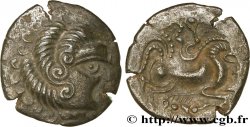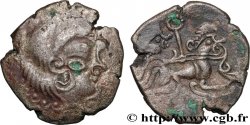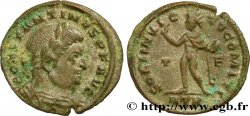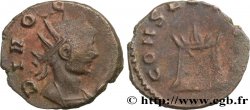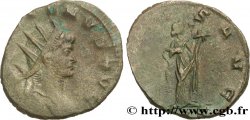v19_0466 - GALLIEN - ARMORICA - CORIOSOLITÆ (Region die Corseul, Cotes d'Armor) Statère de billon, classe VI, hybride vénèto-coriosolite
MONNAIES 19 (2004)
Startpreis : 220.00 €
Schätzung : 600.00 €
Erzielter Preis : 220.00 €
Anzahl der Gebote : 1
Höchstgebot : 1 000.00 €
Startpreis : 220.00 €
Schätzung : 600.00 €
Erzielter Preis : 220.00 €
Anzahl der Gebote : 1
Höchstgebot : 1 000.00 €
Type : Statère de billon, classe VI, hybride vénèto-coriosolite
Datum: c. 80-50 AC.
Name der Münzstätte / Stadt : Saint-Brieuc (22)
Metall : Scheidemünze
Durchmesser : 25,5 mm
Stempelstellung : 8 h.
Gewicht : 4,88 g.
Seltenheitsgrad : R3
Kommentare zum Erhaltungszustand:
Frappé sur un flan ovale, qui permet une bonne mise en page des types de droit et de revers. Aspect poreux typique du billon et patine grisâtre avec des taches claires
Vorderseite
Titulatur der Vorderseite ANÉPIGRAPHE.
Beschreibung Vorderseite Tête humaine à droite, chevelure en deux rouleaux, les cheveux divisés en grosses mèches en forme de S, le nez réaliste, l’œil ovale.
Rückseite
Titulatur der Rückseite ANÉPIGRAPHE.
Beschreibung Rückseite Cheval androcéphale bridé, galopant à gauche ; au-dessus, restes de la tête de l'aurige et hampe pointée ; entre les jambes, un sanglier.
Kommentare
Le revers avec le cheval et le sanglier orientés à gauche rappelle les classes 3a, b et 4 des Vénètes. Le type de droit se rapporterait à la classe 3b. Mais le métal utilisé et le style font plutôt pencher pour une attribution aux Coriosolites. Ce type semblerait inédit et pourrait constituer une tête de série ou un prototype de la classe VI des Coriosolites qui serait le premier à avoir été frappé.
The reverse with the horse and boar facing left recalls classes 3a, b and 4 of the Veneti. The obverse type would relate to class 3b. But the metal used and the style rather lean towards an attribution to the Coriosolites. This type would seem to be new and could constitute a head of series or a prototype of the class VI of the Coriosolites which would be the first to have been struck
The reverse with the horse and boar facing left recalls classes 3a, b and 4 of the Veneti. The obverse type would relate to class 3b. But the metal used and the style rather lean towards an attribution to the Coriosolites. This type would seem to be new and could constitute a head of series or a prototype of the class VI of the Coriosolites which would be the first to have been struck







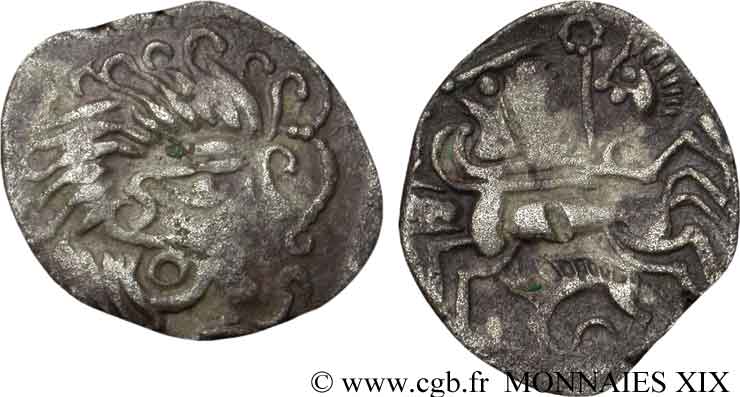
 Berichten über einen Fehler
Berichten über einen Fehler Die Seite drucken
Die Seite drucken Teilen meiner Auswahl
Teilen meiner Auswahl Stellen Sie eine Frage
Stellen Sie eine Frage Einlieferung/Verkauf
Einlieferung/Verkauf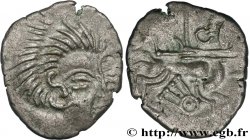
 Details
Details
